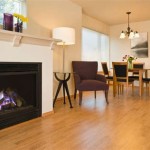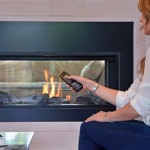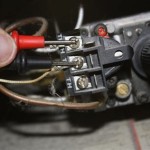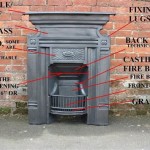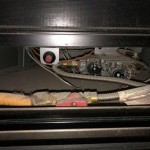Fireplace Inserts: Wood-Burning Efficiency and Modern Heating
Fireplace inserts represent a significant upgrade over traditional open fireplaces, offering improved heating efficiency, enhanced safety, and a cleaner burn. Specifically, wood-burning fireplace inserts transform existing masonry or prefabricated fireplaces into highly effective heating appliances. These inserts are self-contained units that slide into the existing firebox, providing a sealed environment for combustion. This controlled burn translates to more heat directed into the home and less heat lost up the chimney.
Wood-burning fireplace inserts are typically constructed from cast iron or steel, materials known for their durability and heat retention capabilities. The combustion chamber is designed to maximize the burning of wood and minimize emissions. Modern wood-burning inserts are often equipped with features such as catalytic or non-catalytic combustion systems, air wash systems, and blowers, all designed to increase efficiency and improve the user experience. Choosing the right wood-burning insert requires careful consideration of factors such as the size of the area to be heated, the existing fireplace opening dimensions, fuel type preferences, and desired features.
Understanding the Benefits of Wood-Burning Fireplace Inserts
One of the primary advantages of wood-burning fireplace inserts is their superior heating efficiency compared to traditional fireplaces. Open fireplaces often lose a significant amount of heat through the chimney, with some estimates suggesting that as much as 90% of the heat generated can escape. This inefficiency stems from the uncontrolled airflow and the lack of insulation. Wood-burning inserts, on the other hand, are designed to contain and radiate heat into the living space. The sealed combustion chamber and insulated firebox minimize heat loss, allowing for a more effective transfer of heat into the room. Many models boast efficiency ratings of 70% or higher, meaning that a greater proportion of the wood's energy is converted into usable heat.
Furthermore, wood-burning inserts offer greater control over the burning process. Adjustable air controls allow the user to regulate the rate of combustion, influencing both the heat output and the burn time. This control is particularly beneficial during shoulder seasons when a lower heat output may be desirable, or during colder periods when maximum heat production is needed. The ability to adjust the airflow also affects the cleanliness of the burn, helping to reduce smoke and emissions. This control contributes to a more comfortable and environmentally responsible heating experience.
The installation of a wood-burning insert can significantly enhance the safety of a fireplace. Open fireplaces pose several safety risks, including the potential for sparks to escape and ignite nearby materials, the accumulation of creosote in the chimney, and the risk of carbon monoxide poisoning. Wood-burning inserts address these concerns by creating a sealed combustion chamber and directing exhaust gases through a dedicated flue liner. The sealed environment minimizes the risk of sparks escaping, protecting carpets, furniture, and other flammable items. The dedicated flue liner helps to prevent creosote buildup in the existing chimney, reducing the risk of chimney fires. And when installed and operated correctly, the insert minimizes the risk of carbon monoxide entering the living space.
Modern wood-burning fireplace inserts often incorporate advanced technologies to further improve safety and efficiency. Features such as oxygen sensors and automatic air controls can help optimize the combustion process, ensuring a cleaner and more complete burn. Safety features such as over-temperature sensors and automatic shut-off mechanisms can provide added peace of mind.
Key Features and Technologies in Wood-Burning Inserts
Modern wood-burning inserts utilize a variety of technologies to enhance their performance and user experience. Catalytic and non-catalytic combustion systems are two common approaches to achieving cleaner and more efficient burns. Catalytic inserts employ a catalytic combustor, a coated ceramic honeycomb that helps to burn off smoke and gases at a lower temperature. This results in a more complete combustion process and reduced emissions. Non-catalytic inserts, on the other hand, rely on a carefully designed firebox and air baffle system to create turbulence and mix the smoke and gases with oxygen, promoting a cleaner burn. While catalytic inserts typically offer slightly higher efficiency and lower emissions, non-catalytic inserts are often simpler to operate and maintain.
An air wash system is another essential feature found in many wood-burning inserts. This system directs a stream of air down the inside of the glass door, helping to keep it clean and clear of soot and creosote buildup. The air wash system allows for a better view of the fire and reduces the need for frequent cleaning. In addition, the preheated air entering the firebox contributes to a more efficient combustion process.
Many wood-burning inserts are equipped with a blower, which helps to circulate the heated air throughout the room. The blower draws cool air from the room, passes it over the heated firebox, and then blows the warmed air back into the room. This forced-air circulation can significantly improve the distribution of heat and help to warm a larger area more quickly. Blowers are typically thermostatically controlled, allowing them to automatically adjust their speed based on the temperature of the firebox.
The materials used in the construction of a wood-burning insert also play a significant role in its performance. Cast iron is a popular choice for its excellent heat retention properties and durability. It can absorb and radiate heat slowly, providing a more consistent and even heating experience. Steel is another commonly used material, offering good strength and heat conductivity. Some inserts may combine both cast iron and steel in their construction, leveraging the advantages of each material. The thickness and quality of the steel or cast iron used can significantly affect the insert's lifespan and performance.
Selecting the Right Wood-Burning Insert for Your Home
Choosing the right wood-burning insert requires careful consideration of several factors, starting with the size of the area to be heated. Inserts are typically rated by their heating capacity, measured in British Thermal Units (BTUs). To determine the appropriate BTU rating for your needs, consider the square footage of the room or rooms you want to heat, the insulation level of your home, and the climate in your region. Consulting with a qualified dealer or contractor can provide valuable guidance in selecting the right size insert.
The dimensions of your existing fireplace opening are another critical consideration. The insert must fit properly within the firebox opening to ensure proper function and safety. Measure the width, height, and depth of the firebox carefully, and compare these measurements to the specifications of the insert you are considering. Some inserts may require minor modifications to the fireplace opening, such as removing or altering the firebrick. It's important to consult with a professional installer to ensure that the insert is properly sized and installed.
Fuel type preferences also play a role in the selection process. While all wood-burning inserts are designed to burn wood, some models may be better suited for certain types of wood. Different types of wood have different heat outputs and burn rates. Hardwoods, such as oak and maple, typically produce more heat and burn longer than softwoods, such as pine and fir. The insert's design and combustion system can affect its ability to burn different types of wood efficiently. Consider the availability and cost of different wood types in your area when making your selection.
Desired features and aesthetic preferences are also important considerations. Wood-burning inserts come in a variety of styles and finishes, allowing you to choose one that complements your home's décor. Features such as glass doors, decorative trim, and remote controls can enhance the user experience. Consider what features are most important to you and choose an insert that meets your needs and preferences. The cost of the insert, installation, and ongoing maintenance should also be factored into your decision.
Finally, proper installation is crucial for the safe and efficient operation of a wood-burning fireplace insert. It is strongly recommended to have the insert installed by a qualified and certified professional. A professional installer will ensure that the insert is properly sized, connected to the chimney, and vented. They will also ensure that all safety requirements are met and that the insert operates correctly. Regular maintenance, such as chimney cleaning and inspection, is also essential to ensure the continued safe and efficient operation of the insert.

Wood Burning Fireplace Inserts Insert Installation

Lopi Premium Wood Fireplace Inserts Custom Hearth Fireplaces And Stoves

Napoleon Epi3 Wood Fireplace Insert Inserts By Rockford Chimney

T25i Timberwolf Wood Fireplace Insert Hearth Stove Patio

Wood Inserts We Love Fire

Fireplace Insert Guide Fireplaces Direct Learning Center
.aspx?strip=all)
Cost Of Operating A Wood Insert Cord Calculator Regency

Wood Inserts Fireplace Xtrordinair Made In America

Why A Wood Burning Fireplace Insert Bethesda Md Service

Breckwell Wood Fireplace Insert Sw180i
Related Posts


